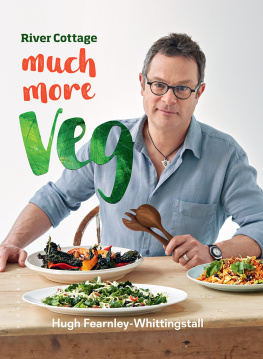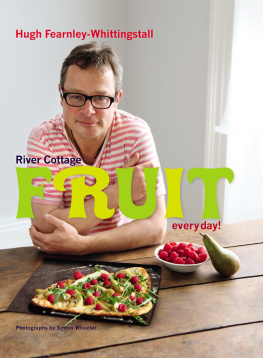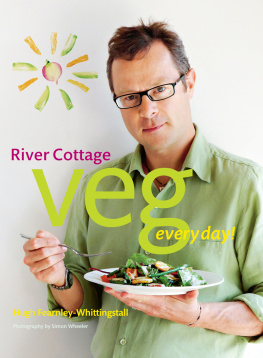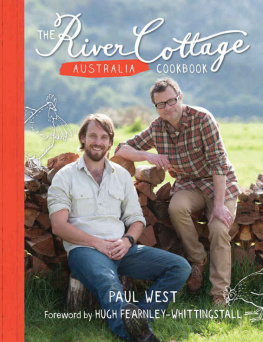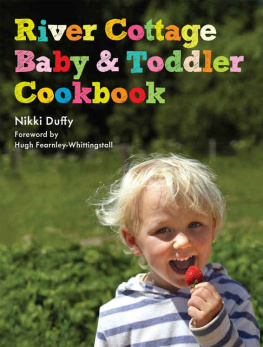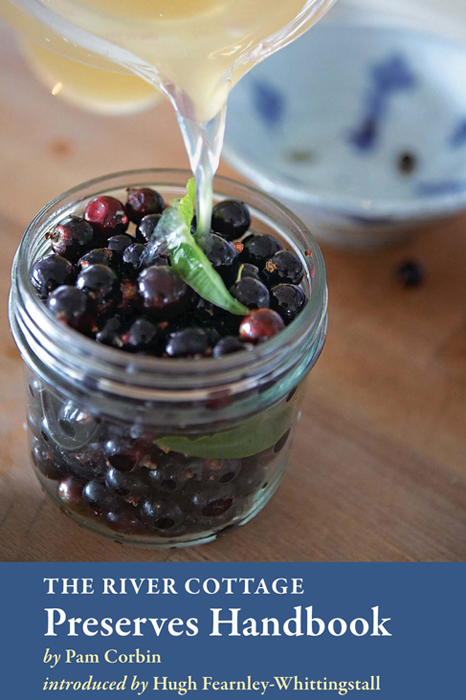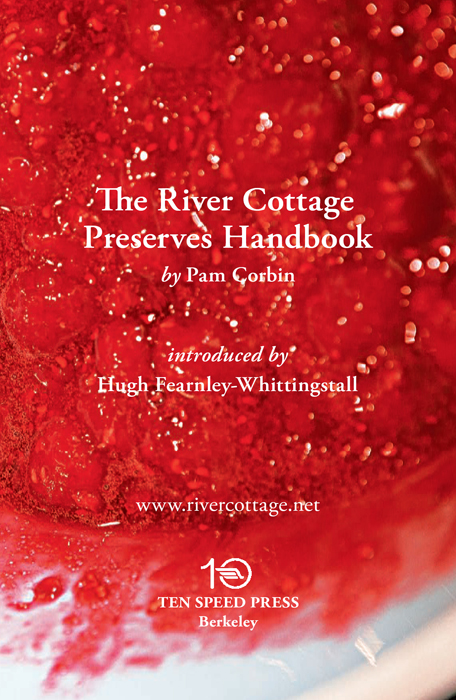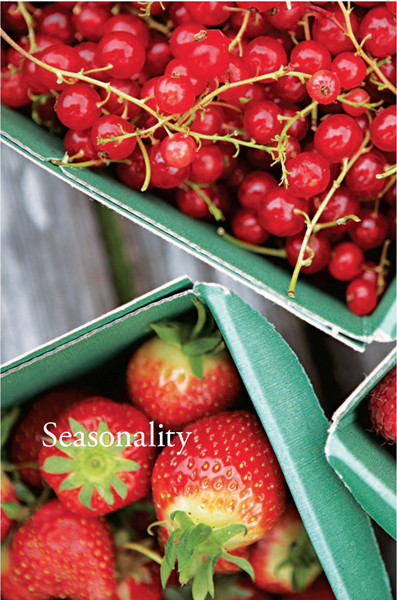Copyright 2008, 2010 by Pam Corbin
Photographs copyright 2008 by Gavin Kingcome
Additional photography copyright 2008 by Lois Wakeman
All rights reserved.
Published in the United States by Ten Speed Press, an imprint of the Crown Publishing Group, a division of Random House, Inc., New York.
www.crownpublishing.com
www.tenspeed.com
Ten Speed Press and the Ten Speed Press colophon are registered trademarks of Random House, Inc.
Originally published in slightly different form in Great Britain by Bloomsbury Publishing Plc, London, in 2008
Grateful acknowledgment is made to Harper Collins Publishers Ltd. to reprint the beech leaf noyau recipe from Food for Free. Copyright 1972 by Richard Mabey. Reprinted by permission.
Library of Congress Cataloging-in-Publication Data is on file with the publisher.
Corbin, Pam.
River Cottage preserves handbook / Pam Corbin ; introduction by Hugh Fearnley-Whittingstall. 1st U.S. ed.
p. cm.
Includes index.
1. Cookery (Jam) 2. Condiments. 3. Chutney. 4. River Cottage (Television program) I. Title.
TX814.5.J35C67 2010
641.6'382dc22
2010010617
eISBN: 978-1-60774-082-7
Project editor: Janet Illsley
v3.1
for my daughters, Pip and Maddy
Contents
I love jam and all its jarred and bottled relatives, the extended family we call by the rather austere name preserves. Actually, theyre not austere at all. They are warm, forward, and friendly, offering up both generous feisty flavors and intriguing spicy subtleties to all who embrace them.
Mostly, I love them for being so delicious. But I also cherish and admire them for something else. They epitomize the values at the heart of a well-run, contented kitchen. Firstly, they embody and thrive on seasonal abundance. Secondly, they are, or should be, intrinsically local, perfectly complementing the grow-your-own (or at least pick-your-own) philosophy. And thirdly, not to be sniffed at in these days of ecological anxiety, they are frugal, thrifty and parsimonious: they waste not, so we want not.
Jams, chutneys, and pickles embrace the seasons, but they also, in an elegant and entirely positive manner, defy them. They do so by stretching the bounty of more abundant months into the sparser ones. We shouldnt underestimate this achievement. Over the centuries, wizards and alchemists have used all the power and magic they can muster to try and catch rainbows, spin straw into gold, and even bring the dead back to life. Theyve failed, of course. Yet all the while, humble peasants and ordinary housewives have got on with the simple business of bottling sunshine so that it may spread a little joy in the leaner seasonsThey call it jam.
More prosaically, I love the way that a couple of hours in the kitchen transforms a gardeners problem into a cooks delight. Come August and September, when it starts raining plums and you are wading through thigh-sized summer squash, your conscience would be rightly pricked if you threw such bounty on the compost heap. But when you know how to preserve your own fruit and vegetables, a glut of apples or a pile of pears becomes an exciting opportunity rather than a headache.
Yet I know many keen cooks, even some gardener cooks, who never make preserves. They love eating them, they love receiving them as gifts, they love the idea of making them, but something is holding them back. What is it? A fear, perhaps, of the perceived paraphernalia of jam making, a mild hysteria about the dangers of boiling sugar, a rumbling anxiety about the setting point. I know that such worries are unfounded delusional even. So what can I do for these poor souls?
Well, I can introduce them to Pam Corbin. I first heard about Pam the Jam when she was running Thursday Cottage Preserves, a small commercial jam company that operated in an almost domestic way, making old-fashioned preserves the old-fashioned way, with real ingredients. When we started planning our Preserving Days at River Cottage, I knew Pam was the person for the job. She shares her passion and wealth of knowledge with enviable clarity and enthusiasm. Many of her sentences end with its simple, really, and with Pam to guide you, you really believe it is.
As this book has come together, my admiration for Pam has deepened. She is a great communicator who bestows infectious confidence on her charges. But more than that, she is a woman of decisive palate and impeccable good taste. Throughout the growing year that it took to produce this book, I was the lucky recipient of regular jamograms little parcels of tasting pots of recipes that she was developing for the book.
From her early rhubarb jam to roasted sweet beet relish, and from apple lemon curd to roasted tomato ketchup, they were invariably exquisite. Your ambitions may be as modest as a few jars of perfect strawberry jam, but Im quite confident that under Pams guidance you will soon be dabbling with blackberry and apple leather, nasturtium capers, figgy mostardo, and elixir of sage. Just writing their names makes me hungry.
Sadly, there wasnt room for all of Pams fabulous recipes in this book. But it is a tribute to her remarkable gifts that every time we decided to leave one out, it felt like a minor tragedy. The upside is that every recipe thats in here is a tried-and-trusted gem. They met with universal approval from the River Cottage tasting panel not a formal body, you understand, but a dangerous scrummage of whoever was around when Pam dropped by with a few more jars or bottles.
Pams approach is not didactic, but encouraging and adventurous. Her message is that, once youve mastered a few basic techniques, theres really no stopping you. In this inspiring book, she will show you the ropes and then give you the reins. Im absolutely sure you will enjoy the ride.
Hugh Fearnley-Whittingstall, Dorset, May 2008
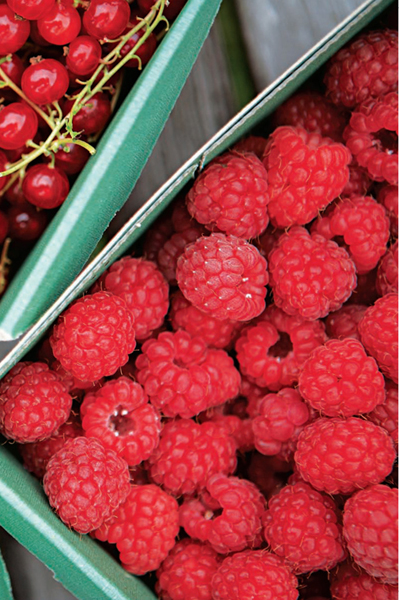
Preserving the bounties of our fruitful summer and autumn was normal a way of life not so many years ago. It was essential to stock up the larder for leaner months, when fresh food was scarce or unavailable and the sealed bottles and jars full of summer would help to allay the monotony of the winter diet. If soft summer currants and berries and gluts of sweet-smelling tomatoes and baskets of vegetables werent kept in some form or another, then there would be no summer produce until the following year. There was no nipping down to the supermarket to buy, in the midst of January, a basket of strawberries or even a bag of tomatoes.
You dont need to turn the clock back far, just a couple of generations to the 1950s, when to own a home refrigerator or a freezer was considered opulent, and of course fresh foods didnt arrive each day of the week, each week of the year, by air and sea from all corners of the globe to flood shop shelves with produce that would otherwise be considered out of season.
The rationing of food in Britain that began during wartime finally finished in July 1954, nine years after the war had ended. The war years had seen the government allocating sugar to the Womens Institute (WI) for jam making so that surplus produce did not go to waste. The extent of food preservation by the WI did not stop at jam making; these resolute ladies also canned fruit and vegetables for the national food supply. The end to those long years of rationing coincided with an increase in the variety of imported foods readily available throughout the year. Unquestionably, for many this has meant that the structure and meaningful importance of working and living the seasons, along with the necessity to preserve and not waste, have vanished from everyday life.



